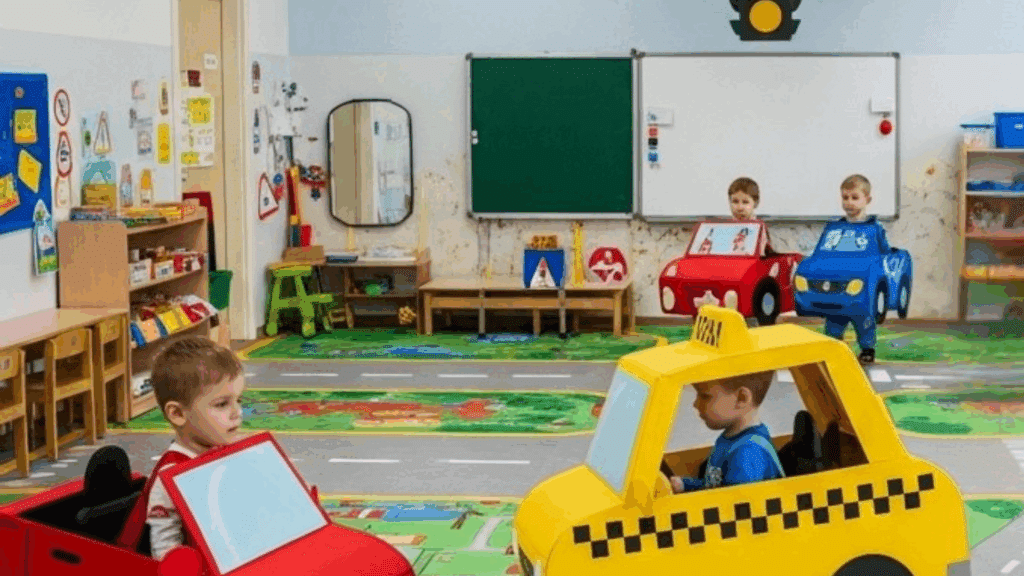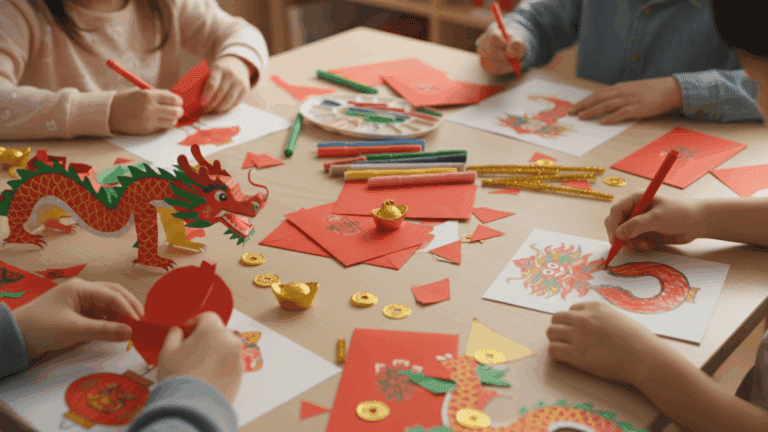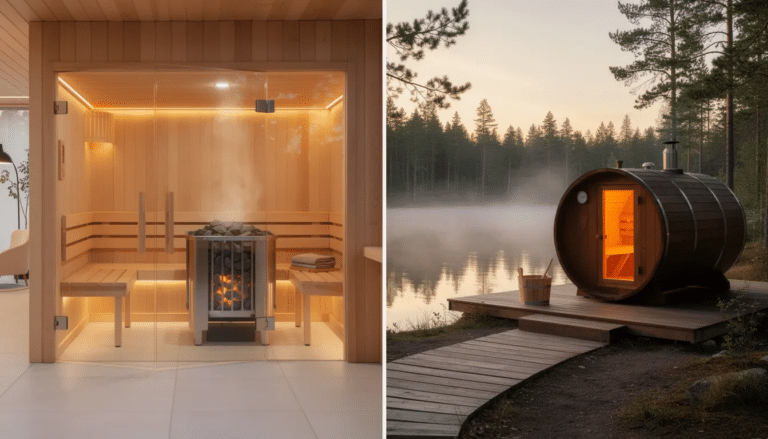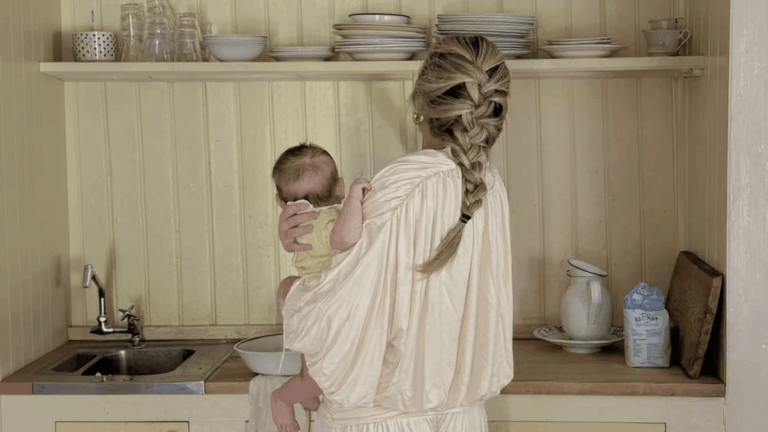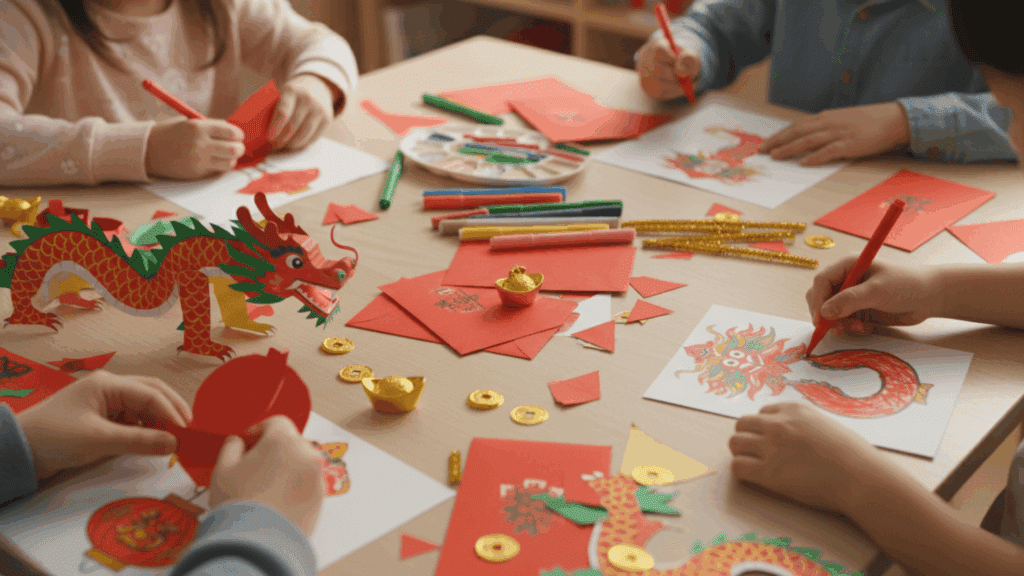Walk into any preschool classroom and the sound hits parents immediately – “Vroom! Vroom! Beep beep!” echoes from every corner as little hands push toy cars across tables, floors, and anything that resembles a road.
Preschoolers are naturally drawn to anything with wheels, wings, or the ability to move fast. Cars, trucks, airplanes, and trains capture their attention like nothing else can.
Transportation activities for preschool turn this natural into powerful educational moments that build essential skills. These hands-on activities teach a range of skills, from fine motor control to basic science concepts, all while keeping children completely engaged.
Most require simple household items and can be set up in just minutes.
Why Preschoolers Love Transportation Activities
Preschoolers are naturally drawn to vehicles because they represent movement, freedom, and independence, everything young children crave.
Cars, trains, and airplanes make exciting sounds and offer visual stimulation that instantly captures their attention.
These moving machines are part of their daily world, from riding in family cars to seeing buses and trucks on the streets.
Transportation activities for preschool tap into this interest by combining learning with play through hands-on projects, such as building paper plate steering wheels, creating ramp races, and making edible car snacks.
These activities develop fine motor skills, introduce basic science concepts, and encourage creative thinking, making learning engaging through real-world experiences that children can easily relate to.
Benefits and Limitations of Transportation Activities for Preschoolers
| Benefits | Limitations |
|---|---|
| Boosts imagination and encourages creative role-play. | It may reinforce gender stereotypes if it is not inclusive of all interests. |
| Improves fine and gross motor skills through hands-on play. | Requires a larger space for complete movement activities. |
| Teaches real-world concepts, including traffic rules and various types of vehicles. | Learning depth may be limited without adult interaction. |
| Enhances language development and vocabulary growth. | Can overstimulate children who are sensitive to noise or activity. |
| Introduces STEM basics through simple experiments and observation. | Some activities may require additional materials or setup time. |
Transportation-Themed Activities in Preschool
Transportation activities for preschool support learning in areas such as movement, problem-solving, language, and creativity.
Hands-On & Creative Learning Activities Ideas
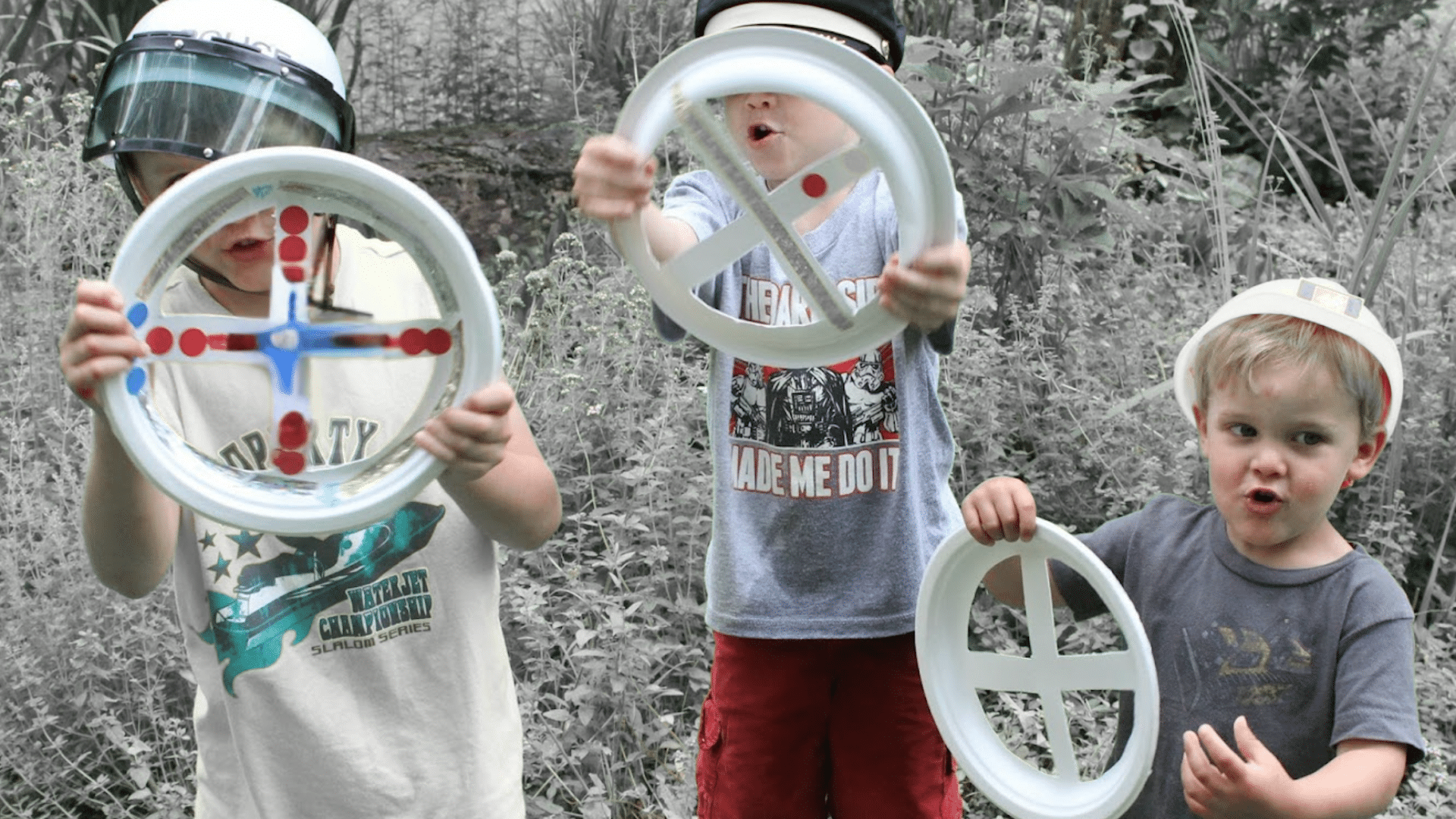
Designed to build fine motor skills, cognitive development, literacy, STEM thinking, and imaginative exploration through playful, hands-on experiences.
1. Paper Plate Steering Wheels
Kids love pretending to drive, and this simple craft lets them take the wheel in their own imaginative world. It’s excellent for role-playing during storytime or in dramatic play centers.
Develop: Fine motor skills and imaginative play
DIY Steps:
- Cut out the center of a paper plate to create a ring.
- Let children decorate it with crayons, stickers, or washi tape.
- Attach a cardboard strip to the back to act as a handle.
2. Egg Carton Trains
This craft invites children to think sequentially as they connect multiple cars to form a train. It also introduces recycling and repurposing materials for creative use.
Develop: Hand-eye coordination and creativity.
DIY Steps:
- Cut egg cartons into individual or paired cups for train cars.
- Attach bottle caps or buttons as wheels using glue.
- Connect cars using pipe cleaners or string and decorate.
3. Shape Vehicles College
Children explore geometry by using basic shapes to build familiar vehicles. This helps them identify parts and form whole images from simple components. It also strengthens their ability to plan spatial layouts.
Develop: Shape recognition and spatial awareness
DIY Steps:
-
Provide cut-out shapes in different colors and sizes.
-
Ask children to use glue to assemble shapes into a car, bus, or truck.
-
Encourage them to label their creation or tell a story about it.
4. DIY Traffic Light
This project introduces early concepts of traffic safety and sequencing. Kids learn the function of each light color while crafting their own stoplight. It also strengthens understanding of order and rule-following.
Develop: Color recognition and sequencing
DIY Steps:
- Cut out circles from red, yellow, and green paper.
- Glue them in a vertical line on a cardboard strip or paper tube.
- Let children role-play traffic scenarios using their finished lights.
5. Car Track Painting
Combining movement and art, this activity shows how motion creates patterns. Children can experiment with pressure and speed as they push cars through paint. It’s a sensory-rich and process-focused experience.
Develop: Cause-effect understanding and sensory play
DIY Steps:
- Pour washable paint onto trays and dip toy car wheels in it.
- Roll cars across paper to create track prints.
- Let the artwork dry and display it as a unique vehicle, “prints.”
6. Ramp Races
Children explore basic physics as they test how vehicles move on slopes. This hands-on STEM challenge encourages prediction, comparison, and experimentation.
Develop: Understanding of gravity and slope
DIY Steps:
-
Set up a ramp using a board, cardboard, or books.
-
Provide cars of different weights and sizes for testing.
-
Encourage kids to guess which one will win before each race.
7. Float or Sink: Boat Test
Young scientists investigate how materials interact with water by building and testing boats. It’s a great way to introduce the scientific method in an age-appropriate way. Kids learn through observation and comparison.
Develop: Observation and hypothesis-testing
DIY Steps:
- Provide foil, sponge, cork, and paper for building boats.
- Fill a large container with water and test which designs float.
- Try placing small weights inside to further test buoyancy.
8. Magnet Truck Rescue
In this sensory-science blend, kids explore how magnets attract metal objects. Using a magnet as a “tow truck” adds a fun narrative layer. They also improve coordination as they maneuver the magnet to rescue hidden items.
Develop: Understanding magnetism and problem-solving
DIY Steps:
- Fill a bin with rice or beans and hide paper clips or washers.
- Attach a magnet to a toy truck or string for rescue play.
- Let kids “tow” metal items out using the magnet.
9. Bridge Building Challenge
This activity encourages children to use trial-and-error thinking as they build stable bridges. It introduces structural engineering through creative play. Children must plan and test designs that support weight.
Develop: Engineering skills and critical thinking
DIY Steps:
- Provide building materials like straws, blocks, craft sticks, and tape.
- Ask kids to build a bridge across two chairs or boxes.
- Test it by placing a toy car on top and adjusting if it falls.
10. Tire Size Sorting
Kids compare and contrast vehicle types based on wheel size, improving their observational skills. It reinforces visual discrimination and introduces categorization. This task also builds early math vocabulary, such as “bigger” and “smaller.”
Develop: Categorization and size comparison
DIY Steps:
- Gather toy cars or trucks with various tire sizes.
- Create sorting mats labeled “small,” “medium,” and “large.”
- Let kids place vehicles in the correct categories.
11. Transportation Story Stones
These storytelling tools enable kids to develop language and narrative skills by selecting random images to inspire their stories. Stones also offer a tactile experience that’s perfect for small hands. They’re great for solo or group storytelling.
Develop: Storytelling and language development
DIY Steps:
- Paint or draw vehicle pictures (e.g., plane, firetruck, boat) on smooth stones.
- Seal with Mod Podge or clear glue for durability.
- Have children pull stones from a bag and create a travel tale.
12. Down By the Station Song & Fingerplay
This classic tune boosts memory and rhythm through repetition. Adding fingerplay helps children connect language to movement. It also encourages group participation and listening.
Develop: Rhythm, memory, and listening skills
DIY Steps:
- Teach the “Down by the Station” lyrics in small groups.
- Demonstrate hand motions, such as pulling a horn or chugging arms.
- Let kids take turns leading the song with their own gestures.
13. Transportation Bingo
This game strengthens visual matching skills while reinforcing vocabulary related to transportation. It also encourages attention and turn-taking. The visual format makes it accessible for non-readers.
Develop: Visual discrimination and attention
DIY Steps:
- Print or create bingo cards featuring images of various vehicles.
- Call out names or show flashcards; kids place counters on matching images.
- Reward with stickers or applause when someone gets “Bingo!”
14. Small World City Play
Kids create miniature cities where vehicles move around, building storytelling and role-play opportunities. They design settings, assign roles, and solve problems, like traffic jams or detours. It’s open-ended and imaginative.
Develop: Imaginative play and storytelling
DIY Steps:
- Use a cardboard base or rug to draw roads with chalk or tape.
- Add buildings using blocks or boxes and place toy vehicles throughout.
- Encourage kids to narrate a day in their mini-city.
15. Vehicle Sound Match Game
This listening game helps children associate everyday sounds with the objects that make them. It boosts memory and listening accuracy while making sound recognition fun and interactive.
Develop: Auditory discrimination and memory
DIY Steps:
- Play audio clips of various vehicles (e.g., siren, horn, helicopter).
- Provide matching pictures or toy vehicles for kids to select from.
- Turn it into a game by hiding the source and having players guess aloud.
16. Edible Car Snacks
Combining food with fun, this activity lets kids build snackable cars, promoting nutrition awareness and creativity. It’s hands-on and rewarding; they can eat their creation afterward!
Develop: Creativity and fine motor coordination
DIY Steps:
- Use apple slices or graham crackers as the car base.
- Add grape, blueberry, or mini cheese wheels using toothpicks.
- Let kids customize with raisin passengers or peanut butter “glue.”
Active & Movement-Based Activities Ideas

These activities can build gross motor skills, spatial awareness, coordination, and self-regulation through high-energy, playful movement inspired by vehicles.
17. Red Light, Green Light (Vehicle Edition)
This classic movement game turns into a transportation adventure as kids pretend to drive, fly, or ride. It promotes listening and impulse control through playful stop-and-go actions.
Develop: Listening, self-regulation, and reaction time
DIY Steps:
- Call out “Green Light” (go) and “Red Light” (stop) as children pretend to drive or fly.
- Add vehicle roles, such as airplanes with arms outstretched, or bicycles with pedaling motions.
- Use colored signs or flashcards as visual cues for non-verbal play.
18. Transportation Yoga
This calming activity combines vehicle-themed poses with gentle stretching and balance exercises. It helps children focus their energy while exploring how their bodies move like machines.
Develop: Balance, strength, focus, and body awareness
DIY Steps:
- Guide kids through the airplane pose (arms out, one leg lifted), the boat pose (balanced on the bottom), and the bicycle legs pose (lying down and pedaling).
- Create a “transportation journey” story linking each pose (e.g., “First, we fly across the sky…”).
- End with “parking pose” (lying still) to cool down and rest.
19. Vehicle Obstacle Course
Set up a course where children pretend to be different vehicles while navigating physical challenges. Crawling like a train or flying like a plane promotes coordination in a fun, purposeful way. It also allows creative input from kids.
Develop: Gross motor skills, spatial planning, and coordination
DIY Steps:
- Use cones, tunnels, hula hoops, and chalk-drawn paths to create an obstacle course.
- Assign vehicle roles: crawling as trains, tiptoeing as helicopters, or hopping as bouncy buses.
- Allow children to build their own sections of the course for added engagement.
20. Parachute Airplane Toss
This group activity fosters teamwork and excitement as children collaborate to launch paper airplanes. It strengthens upper-body coordination and introduces basic flight concepts in a hands-on way.
Develop: Cooperation, motor coordination, and teamwork
DIY Steps:
- Place paper airplanes in the center of a parachute or bedsheet held by children.
- On the count of three, bounce the sheet to launch the planes into the air.
- Repeat using different flight techniques, or assign kids to retrieve and relaunch.
21. Musical Roads
Kids move on taped floor “roads” while music plays, mimicking cars or buses in motion. When the music stops, they must freeze in place, testing control and timing. It blends rhythm, focus, and vehicle-themed fun.
Develop: Rhythm, movement control, and listening skills
DIY Steps:
- Use masking or painter’s tape to create winding “roads” on the floor.
- Play vehicle-themed music and let kids drive toy cars or walk along the paths.
- Stop the music at random intervals and instruct them to freeze like parked cars.
Tips for Successful Transportation Activities
- Make It Interactive: Use movement-based play, such as “driving” or obstacle courses, to keep kids physically and mentally engaged.
- Connect to Real Life: Discuss familiar vehicles in their community to make learning relevant and easier to understand.
- Balance High and Low Energy Activities: Alternate between energetic games and quiet tasks, such as crafts or matching games, to help children maintain their emotional regulation.
- Use Open-Ended Materials: Provide items such as cardboard boxes, wheels, and blocks so kids can build their unique vehicles.
- Encourage Storytelling and Role Play: Ask open-ended questions during play to spark imagination and develop early language and communication skills.
Bottom Line
Transportation activities for preschool convert ordinary learning into exciting play experiences that children love.
These creative ideas demonstrate that simple materials can effectively build essential skills, including fine motor coordination, STEM thinking, and social development.
From paper plate steering wheels to parachute airplane tosses, each activity connects classroom learning to real-world experiences that stick with young minds.
Ready to rev up your classroom fun? Try these activities and share which ones became instant favorites with your little learners!


